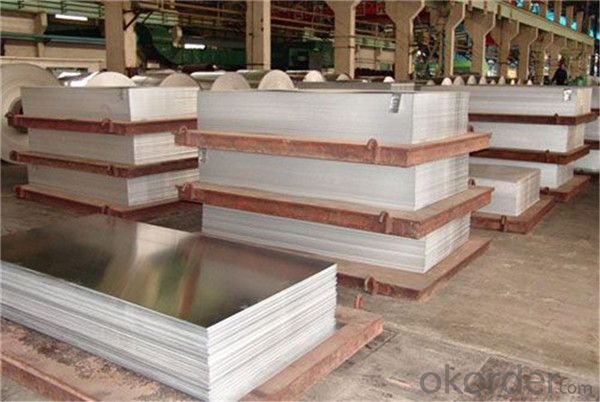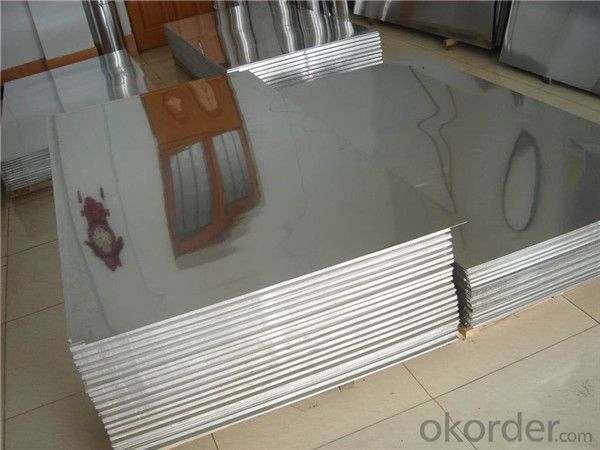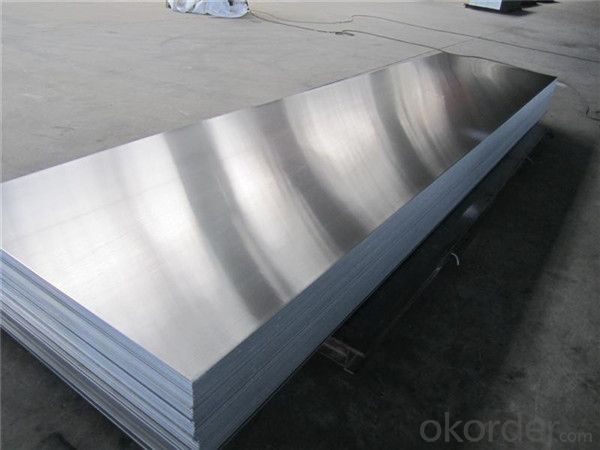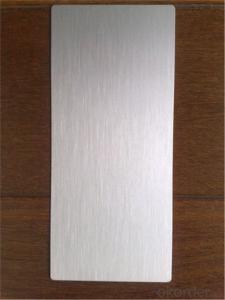Aluminium Sheet For Building Material Plain Roofing 1100 H24
- Loading Port:
- Shanghai
- Payment Terms:
- TT OR LC
- Min Order Qty:
- 10 m.t.
- Supply Capability:
- 10000 m.t./month
OKorder Service Pledge
OKorder Financial Service
You Might Also Like
Packaging & Delivery
Packaging Details: | wooden cases is suitable for long distance exporting. |
Delivery Detail: | 30-45 days after receiving L/C or payment in advance |
Decorative Coil/Plate | |
Alloy: | 1100/8011/3003 |
Temper: | H16/H18/H26 |
Thickness: | 0.10mm~0.50mm |
Width: | 1000mm--1300mm |
Tensile Strength: | 155~230Mpa |
Elongation: | ≥2.0% |
T Bend: | within 2T |
PS Board Base | ||
Alloy: | 1060 | |
Temper: | H18 | |
Thickness: | 0.14mm~0.27mm | |
Width: | 300--1250mm | |
Tensile Strength: | ≥140Mpa | |
Elongation: | ≥2.0% | |
Circuit/Lighting sheet | ||
Alloy: | 1060/1100/8011/1050 | |
Temper: | H16/H18 | |
Thickness: | 0.14mm~0.50mm | |
Width: | 300--1250mm | |
Tensile Strength: | 165~195Mpa | |
Elongation: | ||
Brief Introduction for Cold Rolled Steel Coil
Cold Rolled Steel Coil is steel that has been worked below its recrystallization temperature by passing it between a pair of rollers. Recrystallization temperature is the temperature at which grains in the lattice structure of the metal have been rearranged, leaving it free of strain and deformations. Cold Rolled Steel Coil is pre-treated before being cold rolled with a process known as pickling, which uses strong acids to remove scale and other impurities. The Cold Rolled Steel Coil is then passed through rollers to reduce its thickness. Most cold rolling takes place in multiple passes and as the size of the Cold Rolled Steel Coil is further reduced, its strength and hardness both increase, but its ductility decreases. After cold rolling, heating the metal up in a process known as annealing can restore some of its ductility. The final Cold Rolled Steel Coil may be manufactured in the form of sheets, strips, bars, or other forms.
Photos



- Q:Can aluminum sheet be used for heat exchangers?
- Yes, aluminum sheet can be used for heat exchangers. Aluminum has excellent thermal conductivity and is lightweight, making it a suitable material for transferring heat efficiently in heat exchangers. Its corrosion resistance and durability also make it a popular choice in various heat exchange applications.
- Q:What are the common thicknesses of aluminum sheets used in transportation industry?
- Aluminum sheets are widely utilized in the transportation sector for various purposes due to their lightweight, durability, and ability to resist corrosion. In this industry, the thickness of aluminum sheets typically falls within the range of 0.025 inches (0.63 mm) to 0.125 inches (3.18 mm). When it comes to automotive body panels, which necessitate a balance between weight reduction and structural integrity, the preferred thickness of aluminum sheets is usually between 0.040 inches (1.02 mm) and 0.063 inches (1.6 mm). These particular thicknesses ensure sufficient strength while effectively reducing the overall weight of the vehicle compared to steel counterparts. In the aerospace field, where weight reduction is of utmost importance, thinner aluminum sheets are commonly employed. Typically, thicknesses ranging from 0.025 inches (0.63 mm) to 0.040 inches (1.02 mm) are used in the construction of aircraft structures, including wings, fuselage panels, and interior components. It is important to note that the specific thicknesses of aluminum sheets in the transportation industry may vary depending on the particular application, regulatory requirements, and design factors. Thus, it is crucial to consult the relevant industry standards and specifications for accurate information regarding the recommended thicknesses for different transportation applications.
- Q:I have tried every possible method that I could find on the web for cleaning aluminum, tungsten, filler wire. Nothing has seemed to work. I've tried looking for leaks in the argon line. I'm getting decent welds but there is gunk in the welds for sure. I'm worried about overall strength of the welds. Does anybody out there know of a tried and true method for cleaning aluminum, tungsten, filler etc. that is sure to work? If I can follow that method and still have problems It could possibly be a problem with the machine. Any help would be much appreciated.
- Preweld cleaning requires two operations: oil/grease removal and oxide removal. As below, remove oils and greases first, then remove the oxide. Don’t reverse this order. Take the following steps before welding aluminum: 1. Remove oil, grease, and water vapor using an organic solvent such as acetone or a mild alkaline solution like a strong soap. You may also use citrus-based degreasers, but be sure to rinse and dry the part before welding. 2. Remove surface oxides with a stainless steel wire brush (used only for aluminum) or strong alkaline or acid. Many welding suppliers sell oxide-removal solutions in spray or squeeze bottles for local application. Exercise extreme care when handling these solutions, and again, rinse and dry the part before welding. 3. Assemble the joint. If it won't be welded immediately, cover the joint with brown Kraft paper to prevent dirt and grit in the air from getting into the joint. 4. Keep the aluminum dry and at room temperature. 5. Weld within a few days. Clean the joint again if it isn't welded within that time. Good luck!!!
- Q:What is the weight of aluminium plate now?
- Is different according to the different density of aluminum alloy content, such as a series of pure aluminum and aluminum density is 2.71, which is close to that of 1060 Aluminum, 1050.1100 series of density is 2.71. and 3003 aluminum plate belongs to the aluminum manganese alloy, manganese alloy belongs to high density alloy, so the density is higher than that of 3003 aluminum plate 1060. and 5052 series aluminum magnesium alloy, magnesium alloy alloy belongs to low density, so the density of 2.68.5083 5052 aluminium alloy aluminum magnesium alloy containing the content because of the high price (4.5%) so 5083 aluminum density of 2.66. 2 series and 7 Series (such as 7075) belongs to high density alloy (copper and zinc) so high density.
- Q:I deal with aluminum plate material 2A12, thickness 14mm, crack, same temperature treatment, diameter 8mm aluminum bars, no cracks, original aluminum plate quenching crack, and aluminum plate, the material is closed
- 1. Crack type: longitudinal crackFeatures: by table and depthShape conditions: hardenability of the workpiece, easy to produce raw materials, carbide band segregation or non-metallic inclusions extensionPreventive measures: control raw material quality, select preheating treatment, improve original organization2. Crack type: net crackFeatures: located on the surface of the workpiece, depth 0.01 ~ 2mmSurface conditions: surface decarburization, heat treatment, surface hardening, easy to presentPrevent measures: take heating protection, avoid decarburization, delay quenching cooling, reduce quenching temperature3. Crack type: arc crackFeatures: located at the corner of the workpiece, hidden in the surface layerShape conditions: prone to Weicui through the workpiece or carburized partsPreventive measures: change workpiece design, cross section fillet rationalization4, crack type: peel crackCharacteristic: showing the delamination of hardened layerShape condition: surface hardening parts or heat treatment partsPrevention measures: reasonable choice of medium, delay cooling5. Crack type: microcrackFeatures: defects in microstructureShape conditions: hardening of high carbon martensite nearPreventive measures: avoid heating, hot, coarse grain
- Q:Aren't metals in general (and aluminium in particular) excellent heat conductors?
- Yes aluminium is a good heat conductor, which is why it is used as a heatsink to dissipate heat from electronic components like the CPU in you laptop. The idea of the aluminium stand for your laptop is to raise it up from the desktop surface, allowing air to pass between the gap and extract the heat from the aluminium stand as your laptop heats up with use.
- Q:Are aluminum sheets resistant to staining?
- Yes, aluminum sheets are resistant to staining. Aluminum has a natural oxide layer that forms on its surface when exposed to air. This oxide layer acts as a protective barrier, preventing staining and corrosion. However, it is important to note that prolonged exposure to certain chemicals or acidic substances can still cause discoloration or staining on aluminum sheets. Regular cleaning and maintenance are recommended to preserve the appearance and longevity of aluminum sheets.
- Q:Can the aluminum sheets be used for manufacturing food packaging?
- Indeed, the utilization of aluminum sheets in the manufacturing of food packaging is feasible. Owing to its diverse characteristics, aluminum has become a favored option for food packaging. Its lightweight nature, resistance to corrosion, and exceptional heat conductivity are among the reasons for this preference. These attributes render it suitable for safeguarding the freshness and quality of food items. Moreover, aluminum possesses impermeability to light, moisture, and oxygen, thereby aiding in the extension of the shelf life of food products. Furthermore, the malleability of aluminum sheets enables them to be effortlessly molded into various shapes and sizes, thus facilitating tailored packaging solutions. In essence, the food packaging industry frequently relies on aluminum sheets due to their adaptability, durability, and their ability to ensure the safety and integrity of food items.
- Q:Can aluminum sheets be perforated?
- Yes, aluminum sheets can be perforated. Perforation is a process that involves punching holes or creating a pattern of holes in a material. Aluminum is a versatile and malleable metal that can be easily perforated using various methods such as punching, drilling, or laser cutting. Perforating aluminum sheets can serve multiple purposes such as allowing for airflow, reducing weight, enhancing aesthetics, or creating filtration systems. The size, shape, and arrangement of the perforations can be customized to meet specific requirements and design preferences. Overall, aluminum sheets can be effectively perforated to enhance their functionality and visual appeal.
- Q:What is aluminium plate L2-Y2?
- L2Y2 is an industrial pure aluminum sheet:1, L2: China's industrial pure aluminum grades are limited by impurities to prepare, such as L1, L2, L3...... L, is the "aluminum" word Pinyin prefix, followed by the attached order number is bigger, its purity is low. Industrial pure aluminum is generally defined as aluminum with a purity of 99% to 99.9%, and China is designated as 98.8% - 99.7% aluminum.
1. Manufacturer Overview |
|
|---|---|
| Location | |
| Year Established | |
| Annual Output Value | |
| Main Markets | |
| Company Certifications | |
2. Manufacturer Certificates |
|
|---|---|
| a) Certification Name | |
| Range | |
| Reference | |
| Validity Period | |
3. Manufacturer Capability |
|
|---|---|
| a)Trade Capacity | |
| Nearest Port | |
| Export Percentage | |
| No.of Employees in Trade Department | |
| Language Spoken: | |
| b)Factory Information | |
| Factory Size: | |
| No. of Production Lines | |
| Contract Manufacturing | |
| Product Price Range | |
Send your message to us
Aluminium Sheet For Building Material Plain Roofing 1100 H24
- Loading Port:
- Shanghai
- Payment Terms:
- TT OR LC
- Min Order Qty:
- 10 m.t.
- Supply Capability:
- 10000 m.t./month
OKorder Service Pledge
OKorder Financial Service
Similar products
New products
Hot products
Related keywords





























